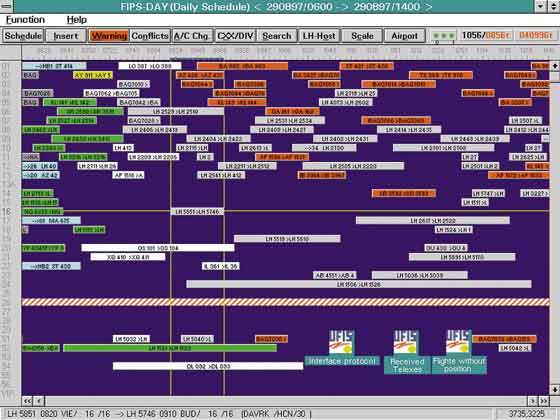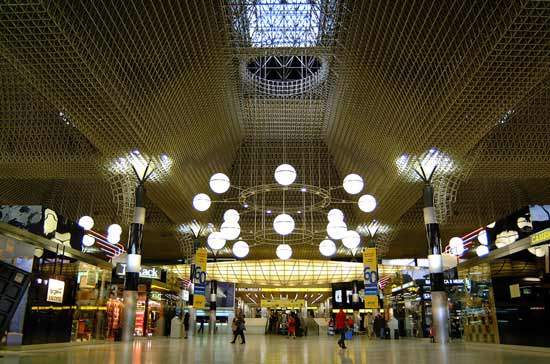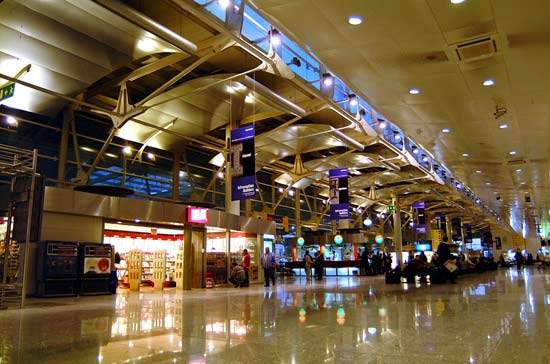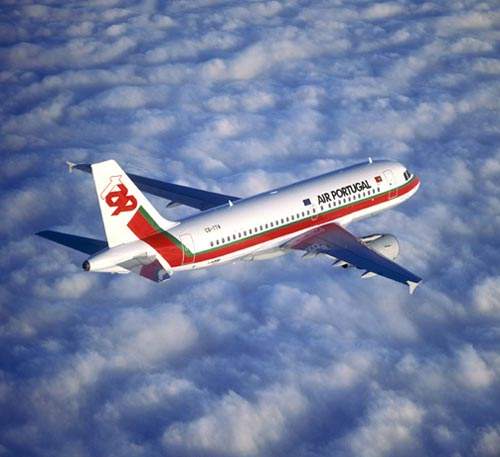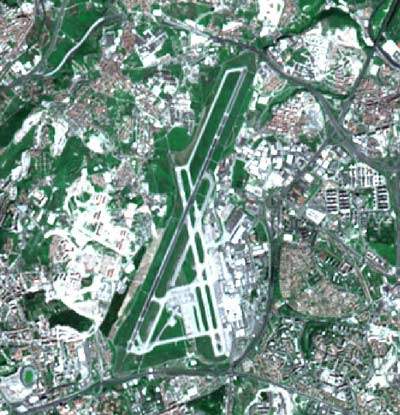Portela Airport in Lisbon is the busiest in Portugal. Both passengers and cargo levels are increasing rapidly and this heavy usage has necessitated an expansion in capacity. Eventually, a totally new airport needs to be built in order to avoid unacceptable levels of congestion. Portela Airport is owned by ANA Aeroportos de Portugal, which is a wholly state-owned authority.
AIRPORT EXPANSION
To meet the anticipated increase in traffic, ABB Airport Systems was contracted to install a new flight information and gate and position allocation system. A consortium of HCI-Construcoes, Alves Ribeiro, Sotecnica, Edifer and Zagope won the contracts to build supporting infrastructures for car hire in Lisbon. As a result of these expansion measures, the airport had a capacity of 14 million passengers per year by 2005.
Portela Airport is now being expanded with an investment of €318 million in the years to 2009. Portela is also due to be connected to the Lisbon Metro system by 2010, part of a €1.4 billion investment programme that will expand the existing underground railway network from 35.6km to 59.7km and increase the number of stations from 48 to 80.
Vítor Constáncio, governor of the Bank of Portugal, has emphasised that Private Finance Initiatives (PFI) and Public-Private Partnerships (PPP) would be needed to fund these projects, given that the flow of EU funds to Portugal is diminishing and that public spending had to be restrained to comply with the EU’s growth and stability pact.
The national airport authority, ANA Aeroportos de Portugal, has announced that Lisbon’s international airport at Portela will have 50% more capacity once proposed work has been concluded. According to a programme set out by ANA, work commenced in 2005 and will be completed by 2008.
In addition, authorities argued that even if work on the new Ota airport (50km north of Lisbon) were to start now, it would not be ready until 2014, making the enlargement and improvement of Portela all the more necessary.
CAPACITY ENHANCEMENTS
In 2001 ANA Aeroportos de Portugal collaborated with the EU body EUROCONTROL to undertake a study of Portela’s capacity and how it could be enhanced for the future. The results of this study showed that the airport had overly complex ground circulation, two crossing runways (one with operational restrictions), no parallel taxiway running the full length of the runways, high runway occupancy and unsuitable runway exits.
In light of these problems it was decided that with proper handling the airport’s capacity for aircraft movements could be enhanced by up to 30%. Two rapid exit taxiways were constructed and finished in 2004 to enhance arrivals capacity, followed by a pilot awareness campaign to shorten runway occupancy time.
To increase departure capacity a new runway crossing was constructed and better use made of the whole area of the two runways. In addition, a new taxiway and apron area was constructed in 2004 to increase the ease of ground movements of aircraft. There were also plans to increase airspace capacity above the airport by reducing military reserved airspace, which would allow more efficient stacking at busy times.
All these improvements led to an increase in the number of aircraft movements from 30 per hour to 40 per hour during 2004-05.
ATC SYSTEM
The airport will also benefit from a new air traffic control system supplied by SITA. The contracts cover the Automatic Terminal Information Service (ATIS), which informs pilots of airport conditions, and departure clearance, which provides details of assigned departure routes and radio frequencies to outbound flights.
Messages from air traffic controllers will be displayed automatically on a screen in the cockpit, eliminating the need for pilots to listen in on voice frequencies and write down information during critical phases of flight. The service uses SITA’s global VHF and satellite AIRCOM networks for message delivery and depends upon avionics systems installed on the aircraft.
This system is part of EUROCONTROL’s ‘ATM Strategy for 2000+’, a plan to develop European air traffic control systems into a seamless whole by 2015 or 2020. The strategy points to the use of a standardised high-volume data link to carry information between aircraft, airlines, air traffic controllers and others. Greater air traffic control efficiency should help the airport cope with the existing high levels of traffic.
LISBON OTA AIRPORT
In 1999, the Portuguese government chose a site for the new Lisbon Airport, in the Ota district to the northwest of the capital. The site was chosen in preference to a rival possibility at Rio Frio on environmental grounds.
The location studies for the new Lisbon International Airport were conducted by Profabril in conjunction with Aéroports de Paris. Further studies into the economic effects and transport forecasts were conducted by Buck Consultants International.
The new airport, which has been delayed several times due to funds being unavailable, is expected to cost $2.3 billion and both ABB Airport Technologies and Hochtief have been mentioned as possible suppliers. The project had been shelved by the previous centre-right administration.

